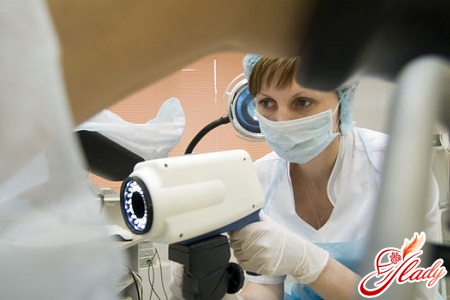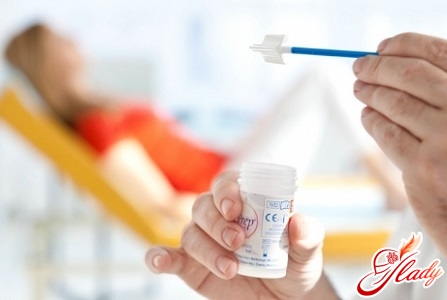
Colposcopy - moderna highly effective and safe method of examining the cervix and vaginal walls to diagnose various diseases at an early stage. Colposcopy of the cervix is performed using a special instrument called a colposcope. This is a medical optical device equipped with special illuminators and allowing to significantly increase the image of the object of study, which makes it possible to determine and study in detail the location of the pathological process. With the help of this method, it is possible to diagnose benign and malignant tumors at the very initial stage, diseases such as leukoplasia and endometriosis, to detect inflammation, as well as erosion and cancer of the cervix. Colposcopy can be used to assess the effectiveness of the prescribed treatment. The colposcopy procedure is not painful. During its implementation, slight discomfort is possible, as with a regular examination, but nothing more. Colposcopy is performed in a gynecological chair, it takes about 10-20 minutes. A speculum is used to expose the cervix, then the gynecologist uses a colposcope to examine the cervix and vaginal walls in detail.

Types of colposcopy
There are 2 main types of colposcopy:simple and extended. During a simple procedure, a routine examination is performed, the nature and type of discharge is determined. Then the discharge is carefully removed with a dry cotton swab, and the cervix is examined using a colposcope. Extended colposcopy involves the use of diagnostic tests that help to more clearly limit and study the pathology of the cervix, determine the nature of the disorder, exclude or confirm cervical cancer, cervical dysplasia (precancerous condition). The most popular tests are: tests using acetic acid, using Lugol's solution (Schiller's test), Chrobak's test. The last test is carried out if a malignant tumor is suspected, a uterine probe is used for it. Extended colposcopy is also painless. It is worth noting that colposcopy alone is not enough to make a final diagnosis. After all, it is aimed only at identifying and initially studying the area of the greatest lesion. For final conclusions and confirmation of primary findings, additional studies are required: cytological studies, targeted biopsy, PAP test. In addition to the main ones, there are also the following types of colposcopy: color and luminescent. Color involves the same procedure as extended. The difference is that other dyes are used. The cervix is colored green or blue, which helps to study the lesions and vascular network in more detail. Luminescent is used to study and detect cancer cells in the epithelium. The cervix is treated with fluorochromes and illuminated with UV rays. In this case, malignant formations differ in color from healthy cells.
Preparing for colposcopy
Before performing a colposcopy, it is recommendedAvoid sexual intercourse for at least 2 days. Do not use vaginal suppositories and creams, use tampons, or douche. Do not conduct the examination during menstruation; any day of the menstrual cycle is suitable for this. Some experts recommend conducting this study on the 2nd-3rd day after menstruation. Who and how often should undergo colposcopy? Every woman is recommended to undergo a gynecological examination at least once a year. The colposcopy procedure can be performed during a preventive examination on the recommendation of a doctor. Colposcopy is recommended for women who are planning a pregnancy in the near future to avoid problems associated with difficulties in bearing a child and premature birth. On the recommendation of a doctor, this examination can also be performed during pregnancy. It is strongly recommended that women over 45 undergo a colposcopy procedure. During climacteric changes, there is the greatest risk of oncological diseases. Timely detection of the problem is very important. After the colposcopy procedure, minor vaginal discharge may be observed. This may be due to the use of medical dyes. Therefore, it is recommended to take a sanitary pad to the examination. There should be no other consequences of this examination. Colposcopy is a harmless and safe procedure. However, if there is heavy bleeding, abdominal pain, or fever, you should immediately seek medical help.









